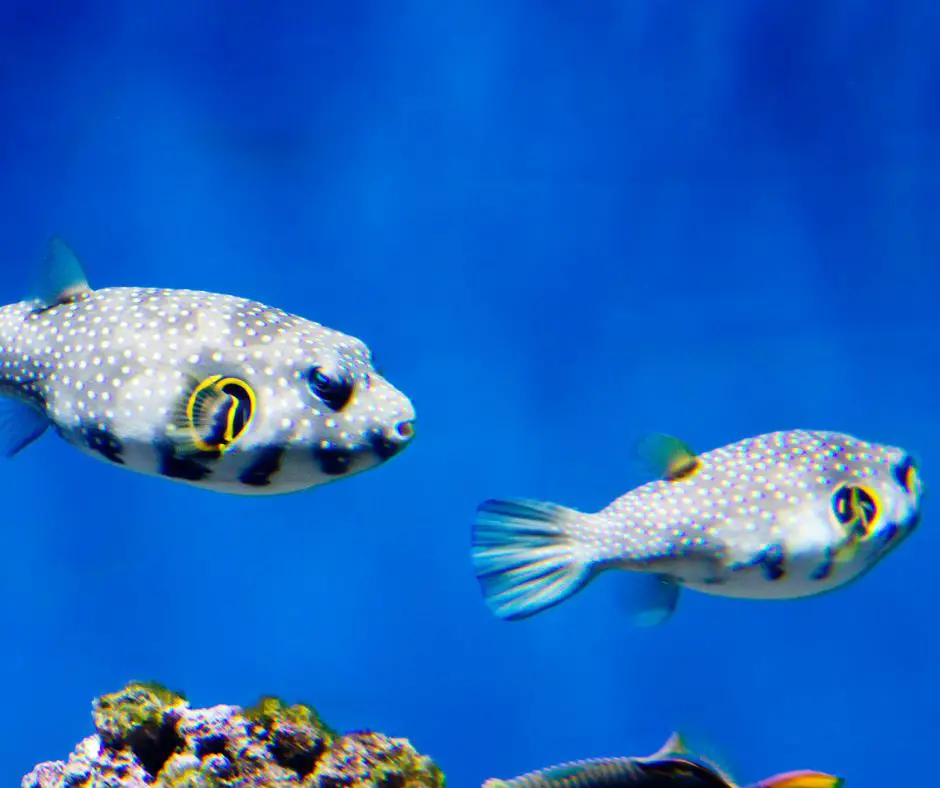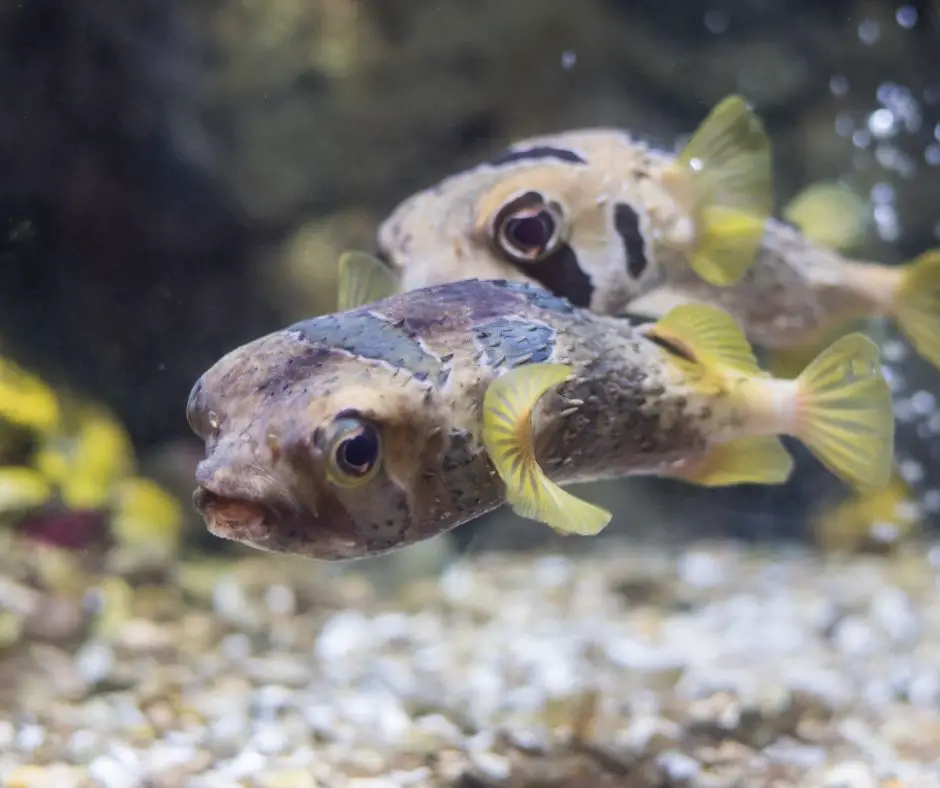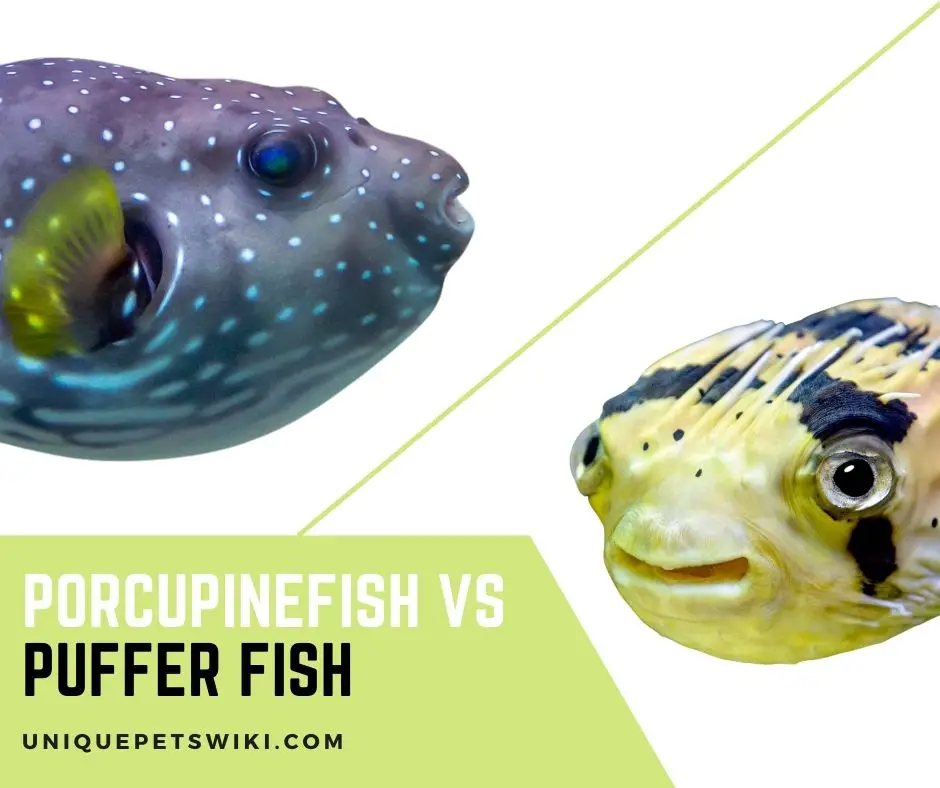Are porcupine fish and puffer fish the same? If not, what features make them different? If you are willing to dive deep into the differences between porcupine fish and puffer fish, this post is for you.
Common people, even exotic animal enthusiasts, often confuse porcupine fish with puffer fish. And that’s understandable, because these two species are often collectively known as puffer fish.
In this post, we are going to discuss everything you need to know about the similarities and differences between porcupine fish and puffer fish.
Contents
Differences Between Porcupine Fish Vs Puffer Fish
The main difference between porcupine fish and puffer fish is that the former have visible spines but the latter don’t.
In the face of a threat, the puffer fish puffs up, and the spines, which are actually specialized scales, become visible.
Porcupine fish belong to the family Tetraodontidae while puffer fish belong to the family Diodontidae.
Here is a table that shows the scientific classifications of these two species:
| Scientific Classification | porcupinefish | pufferfish |
| Kingdom | Animalia | Animalia |
| Phylum | Chordata | Chordata |
| Subphylum | Vertebrata | Vertebrata |
| Class | Osteichthyes | Actinopterygii |
| Subclass | Actinopterygii | Neopterygii |
| Order | Tetraodontiformes | Tetraodontiformes |
| Family | Diodontidae | Tetraodontidae |
| Genus Species | 29 genera, 191 species | 7 genera, 18 species |
What is Puffer Fish?
Puffer fish is a balloon-shaped fish belonging to the family Tetraodontidae. Puffer fish are found in both marine environments and freshwater.
Some species of the fish are critically endangered due to habitat loss, pollution, and overfishing.
The fish inflates itself with water and air, like a balloon—to evade predators. Most puffer fish contain a toxic substance which is deadly for humans.A puffer fish can contain enough poison to kill up to 30 adult humans.
In Japan, puffer fish are a delicious treat, and pretty expensive. However, because they contain a deadly toxin, they must be prepared by licensed, trained chefs.

What is Porcupine Fish?
The porcupine fish, also known as globefish and balloonfish, belongs to the family Diodontidae, order Tetraodontiformes. It lives alone near caves, reefs and ledges, and hunts mollusks and crustaceans at night.
The porcupine fish is shy in nature, and retreats when approached by divers. The fish has a white belly.
There are spines all over its body, which are actually modified scales. When the fish is threatened, it inflates its body with water, and the spikes stand out.
This fish is considered poisonous because it secretes a highly toxic skin substance. The liver, ovaries and other internal organs of the fish contain tetrodotoxin— a neurotoxin 1200 times deadlier than cyanide.
Due to its lethal defense mechanism, the porcupine fish has very few predators.
In general, the porcupine fish is not eaten. However, some species are eaten in some places of the world. In Cebu, Philippines, the fish is an exotic delicacy locally known as tagotongan.

Can Porcupine Fish and Puffer Fish Live Together?
No! It’s not a good idea to house porcupine fish with puffer fish. Also, avoid keeping multiple porcupine fish in the same tank. This is because they often become hostile towards each other.
However, porcupine fish are not hostile towards fish of other species. Some good tank mates for porcupine fish include wrasses angels, tangs, foxfish, engineer gobies, and squirrelfish.
When choosing tank mates for your porcupine fish, make sure you avoid very tiny fish because they may fall prey to your porc. Avoid all mobile invertebrates.
When it comes to choosing tank mates for puffer fish, your choice should be based on the type of puffer fish you have.
In general, some good options are kuhli loach, otocinclus catfish, fancy guppies, tetras, danios, rasboras, cherry shrimp, and clown pleco.
Here is a table that shows the suitability of various tank mates for particular species of puffer fish:
| Tank Mates | Pea Puffer | MBU Puffer | Red-tailed Dwarf Puffer | Golden Puffer | South American Puffer |
| Kuhli Loach | X | ✓ | ✓ | ✓ | X |
| Fancy Guppies | ✓ | X | ✓ | ✓ | ✓ |
| Otocinclus Catfish | X | X | ✓ | ✓ | X |
| Siamese Algae Eaters | ✓ | X | ✓ | ✓ | ✓ |
| Tetras | X | X | X | ✓ | X |
| Rasboras | ✓ | X | X | ✓ | ✓ |
| Danios | X | ✓ | X | X | X |
| Clown Pleco | ✓ | X | ✓ | ✓ | ✓ |
| Cherry shrimp | X | X | X | X | X |
| Corydora | X | X | ✓ | ✓ | X |
Which Is Better: Porcupine Fish or Puffer Fish?
Well, it basically depends on your preferences and needs. When it comes to choosing a porcupine fish or puffer fish, understanding their differences is the key.
There are over a hundred species of puffers, characterized by a prickly texture which becomes visible when the fish is bloated. In contrast, there are about 20 species of porcupine fish, all characterized by bony spines.
You can keep a porcupine fish as a pet, but these fish get rather large, and therefore you will have to get a pretty large aquarium.
However, the porcupine fish are pretty easy to care for. The water temperature should be between 23 and 28 degrees Celsius, and pH should be between 8.1 and 8.4.
Simple Deluxe 400W Aquarium Titanium Fish Tank Heater
- Precise temperature control: An intelligent IC chip controls the heater temperature, making the temperature difference within ±1℃/±2ºF. Provide the best living environment for your aquatic creatures
- Easy to install and widely use: Vertical or horizontal installation and ensure the device is fully submerged underwater. 400W submersible heater is suitable for 37 to 87 gallons aquariums
- External temperature controller: The touch-button controller adjusts the temperature without getting your hands wet. Easy to control the temp from 68℉/20°C to 94℉/34°C. Power cord length: 5.42ft
- Safety: The waterproof level made with IPX8. Titanium tube material that features explosion-proof and anti-corrosion engineering, which makes this submersible heater more resistant to damage while heating better than traditional glass heaters
- Water shortage protection: Built with overheat and water shortage protection. The heater power shall be cut off 10 min in advance when washing tank, changing water and maintaining aquarium, otherwise heating cannot be processed
Last update on 2022-12-29 / Affiliate links / Images from Amazon Product Advertising API
A porcupine fish will cost anywhere between $40 and $100.
Puffer fish are more suitable for living in an aquarium, in part because these fish are very hardy. They are mild-mannered toward other species, and become aggressive and hostile only when threatened.
However, puffer fish are voracious in nature, and that’s why it’s important to be careful when choosing tank mates for them. If the tank mates are too small, they will end up becoming your puffer’s dinner.
Puffer fish can eat a wide range of foods: mussels or clams, frozen or fresh shrimp, flakes or brine shrimp.
For puffer fish, the tank water should be between 25 and 26 degrees Celsius. The pH should be 8.1-8.3. Also, you have to do a 25% water change every couple of weeks.
The price of a puffer fish can be anywhere between $20 and $60.
Conclusion
Both porcupine fish and puffer fish have spines that protrude outwards when there’s a danger. The difference is, in porcupine fish, these spines are always visible, even when the fish is not inflated.
In puffer fish, these spines are visible only when the fish is in an inflated state.
If you want to keep puffer fish or porcupine fish as pets, puffer fish may be a better option because they are hardy, mild-mannered, and voracious.
We hope now you have a better understanding of the differences between these two types of fish.

